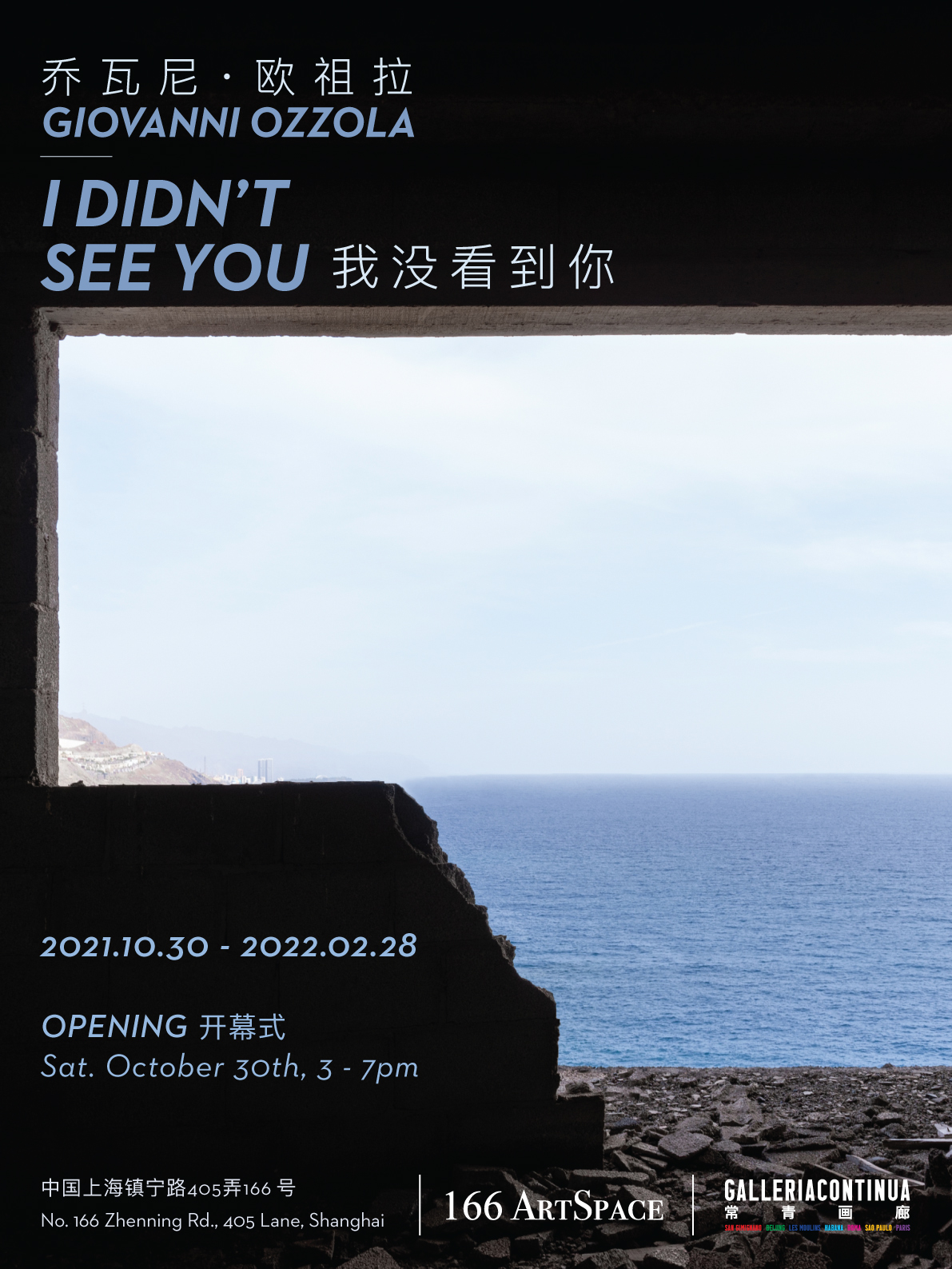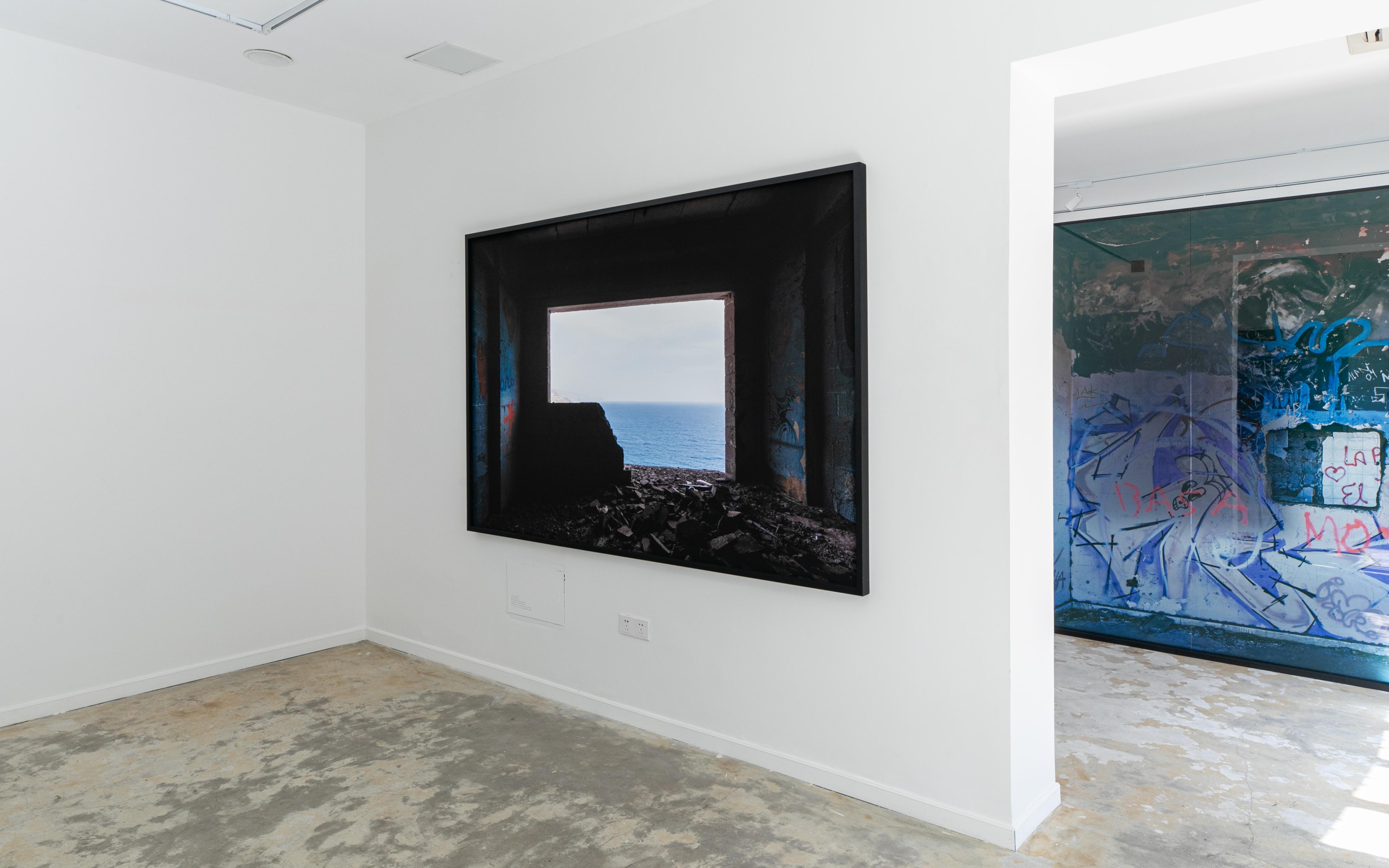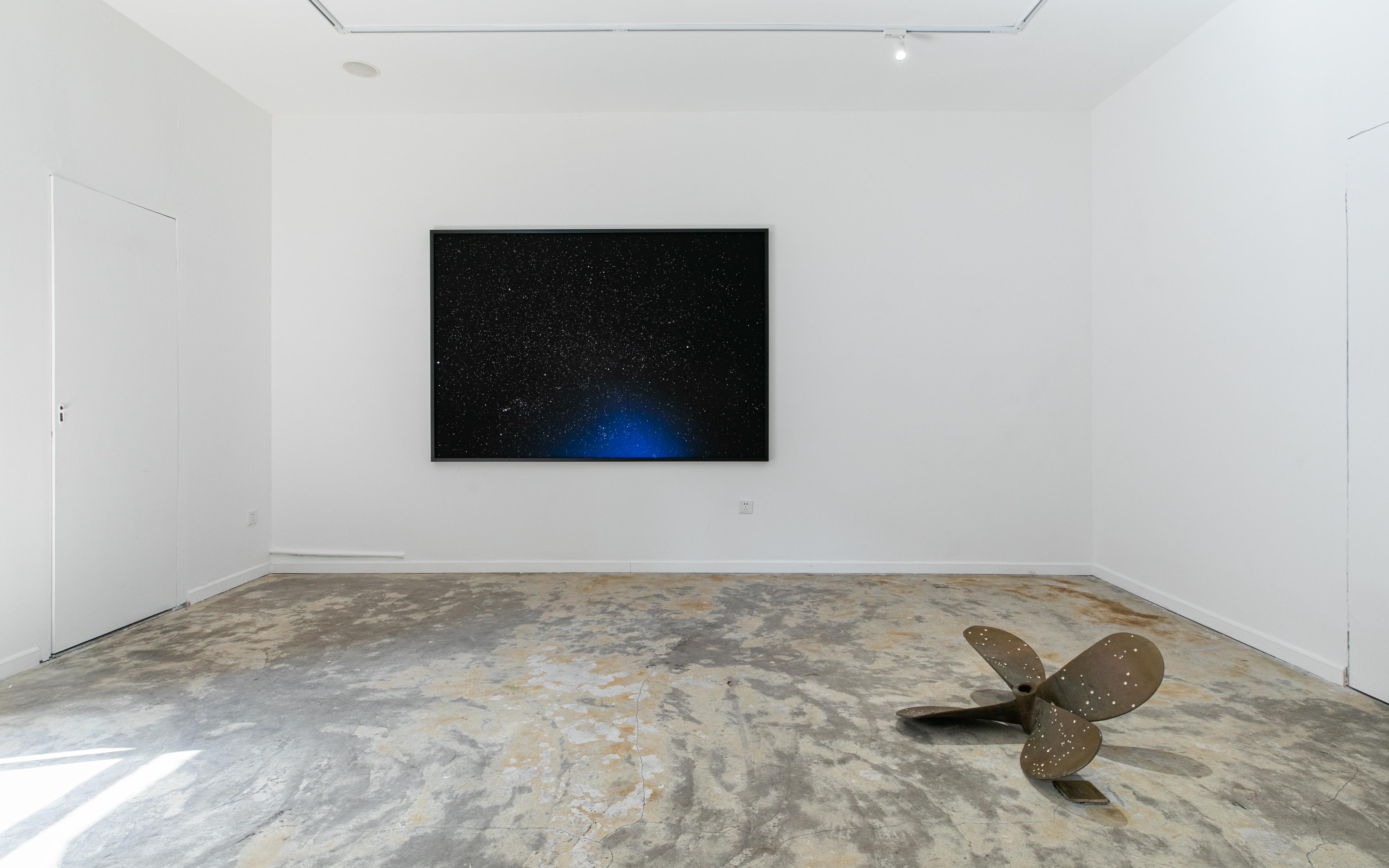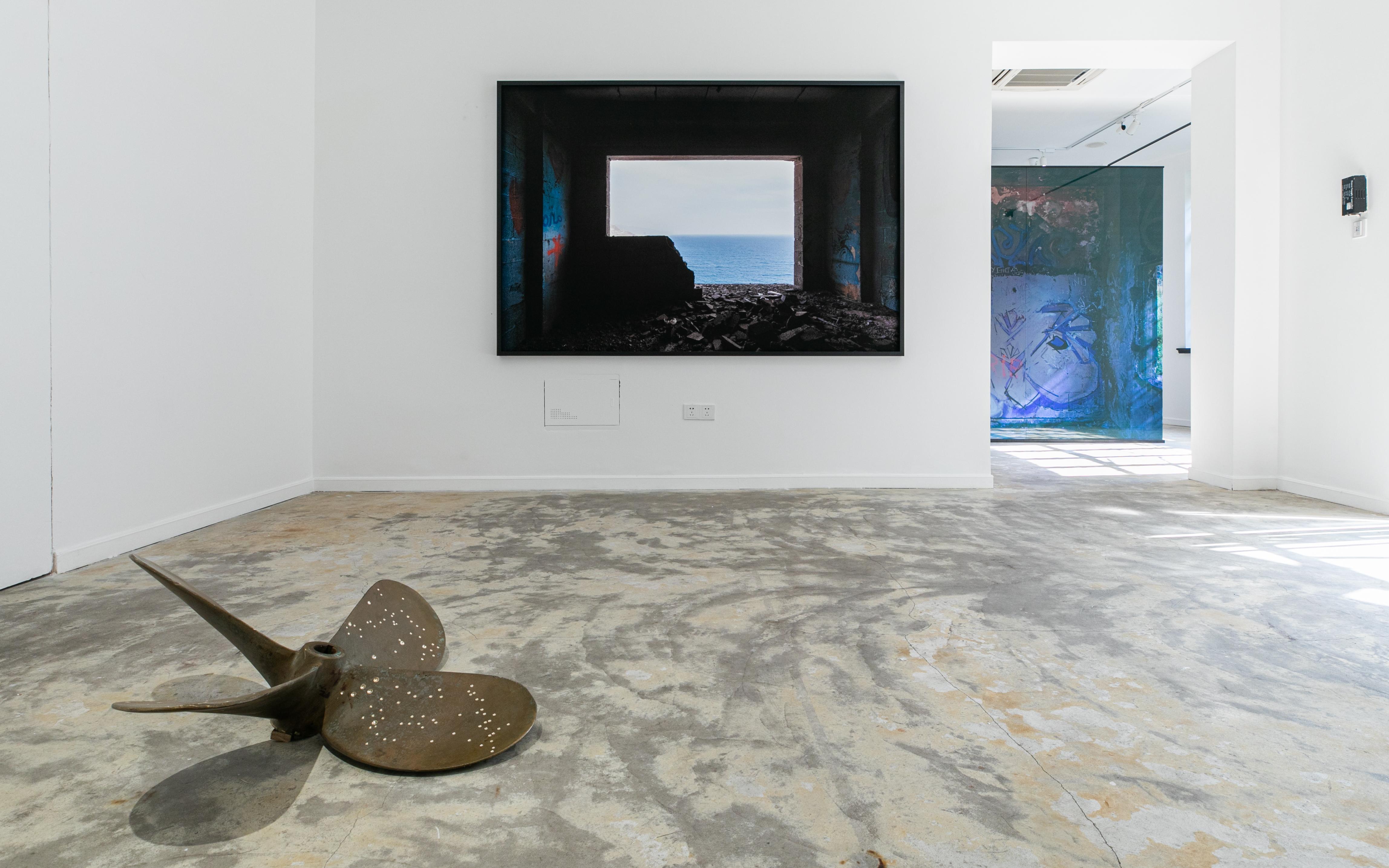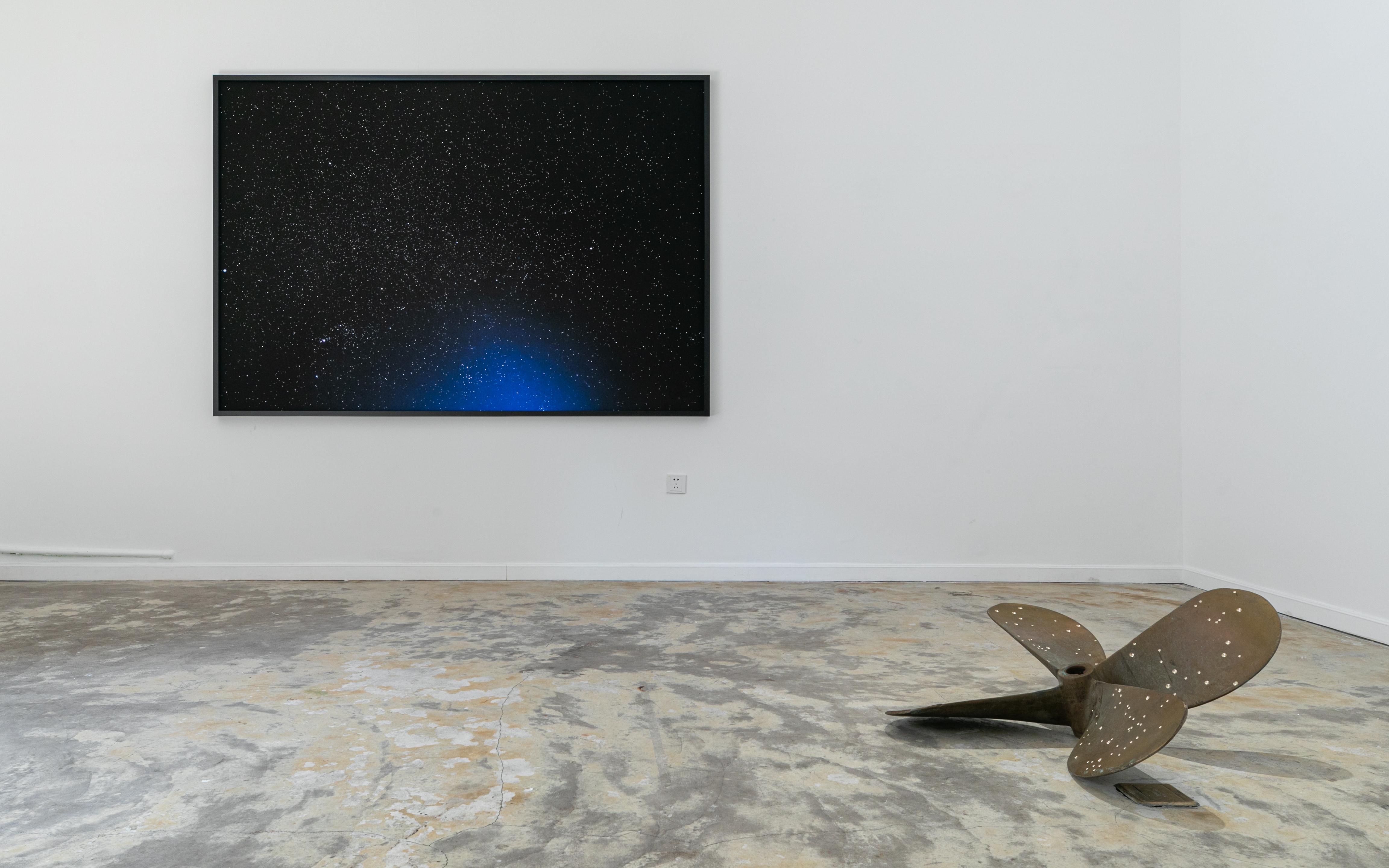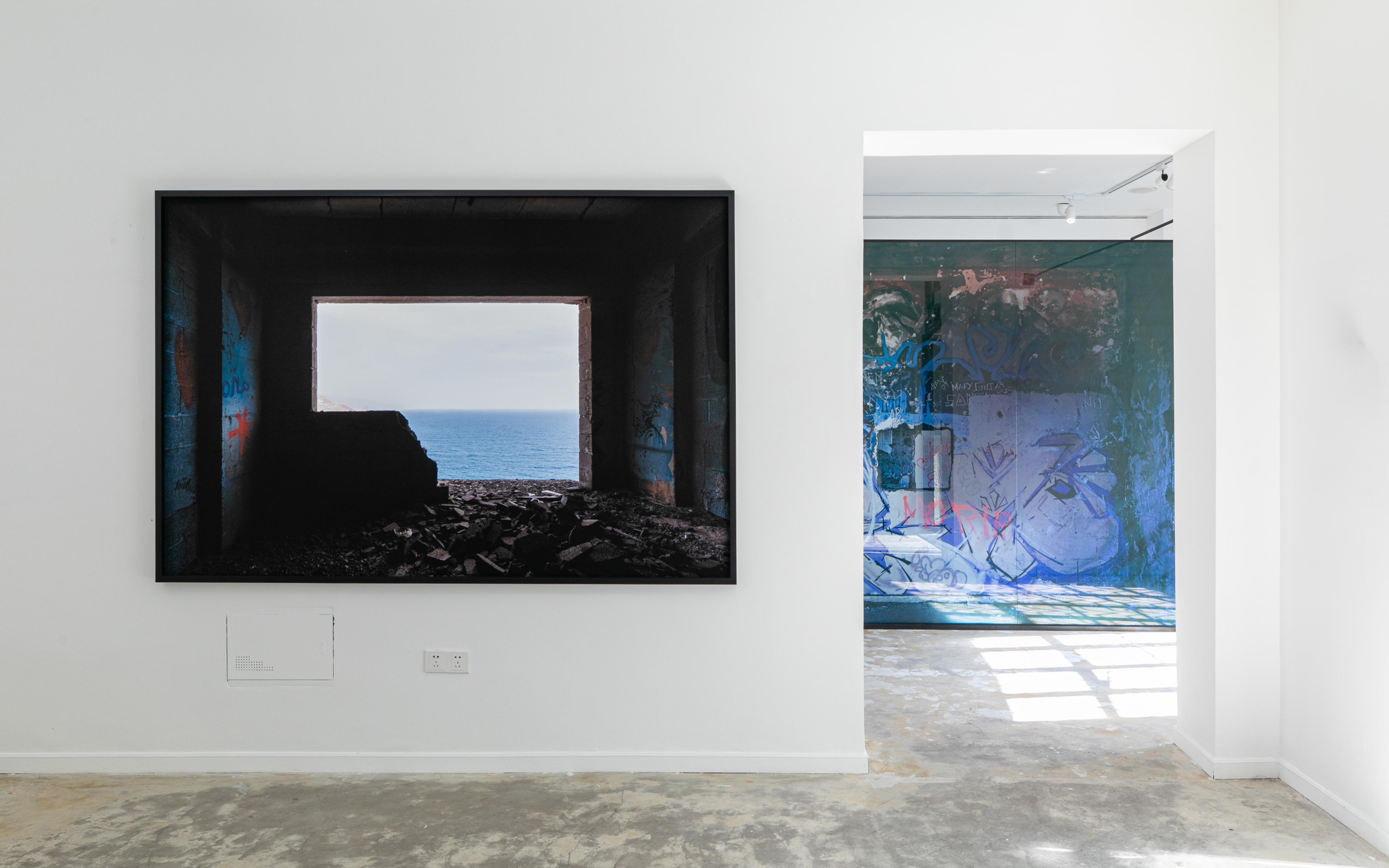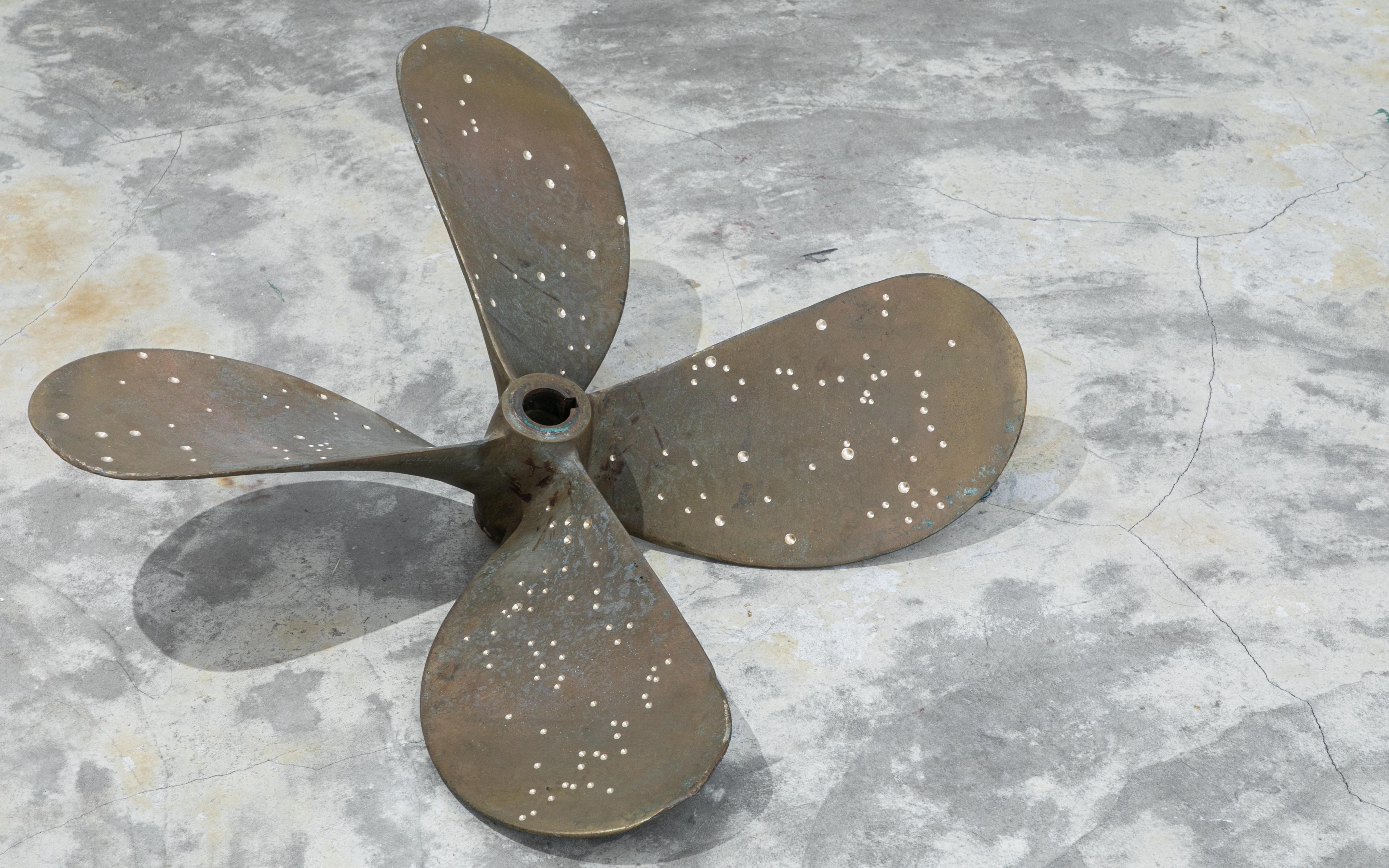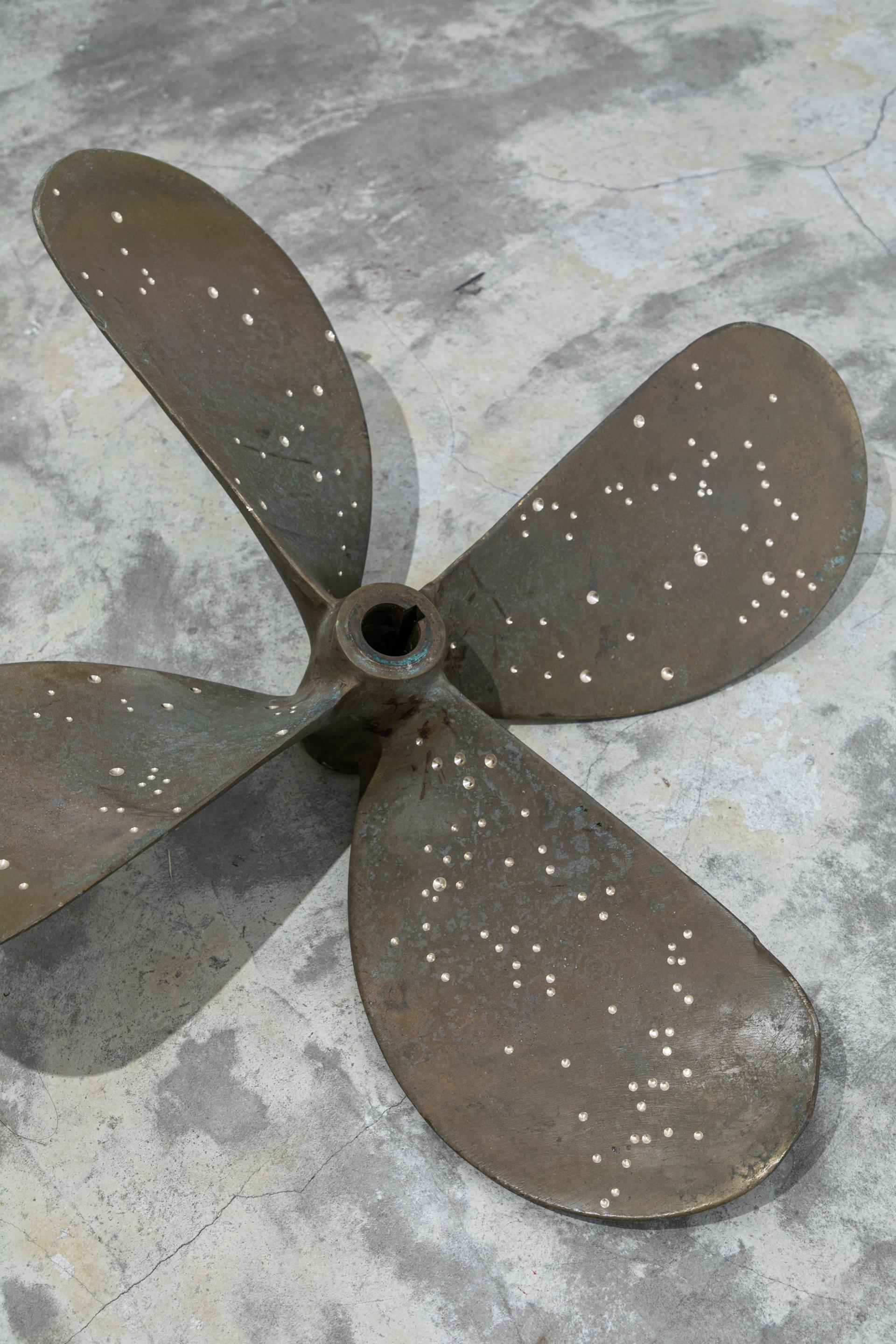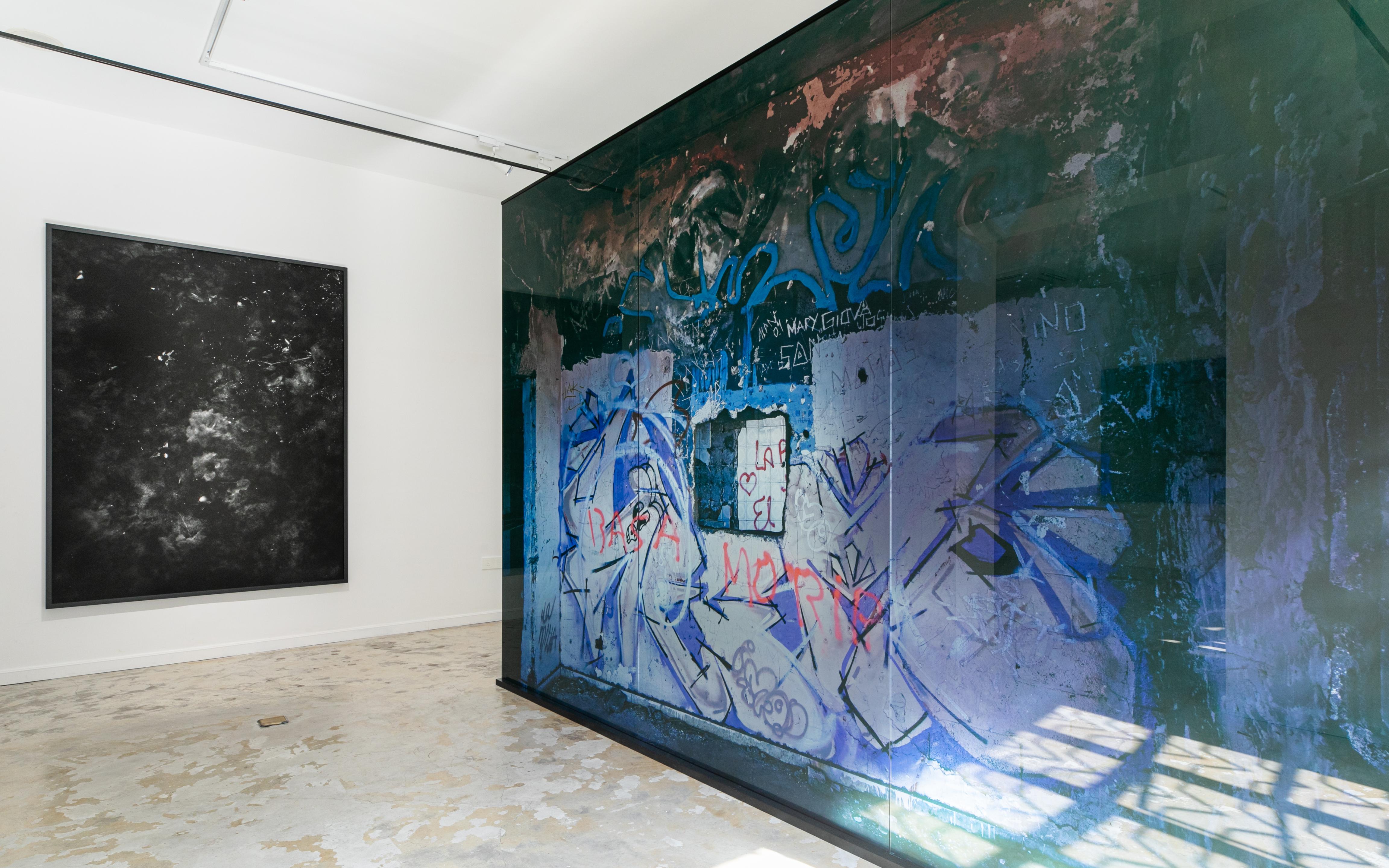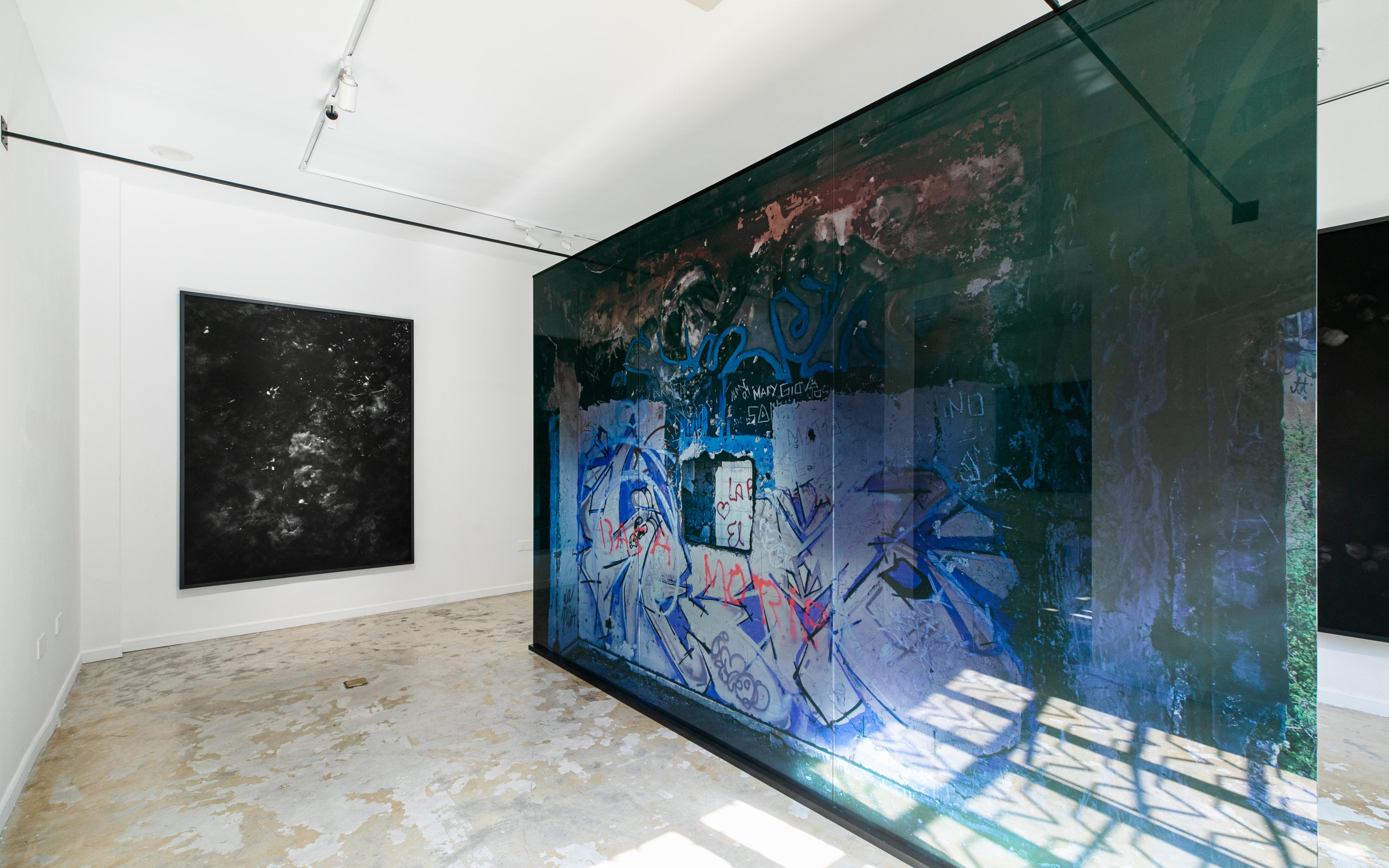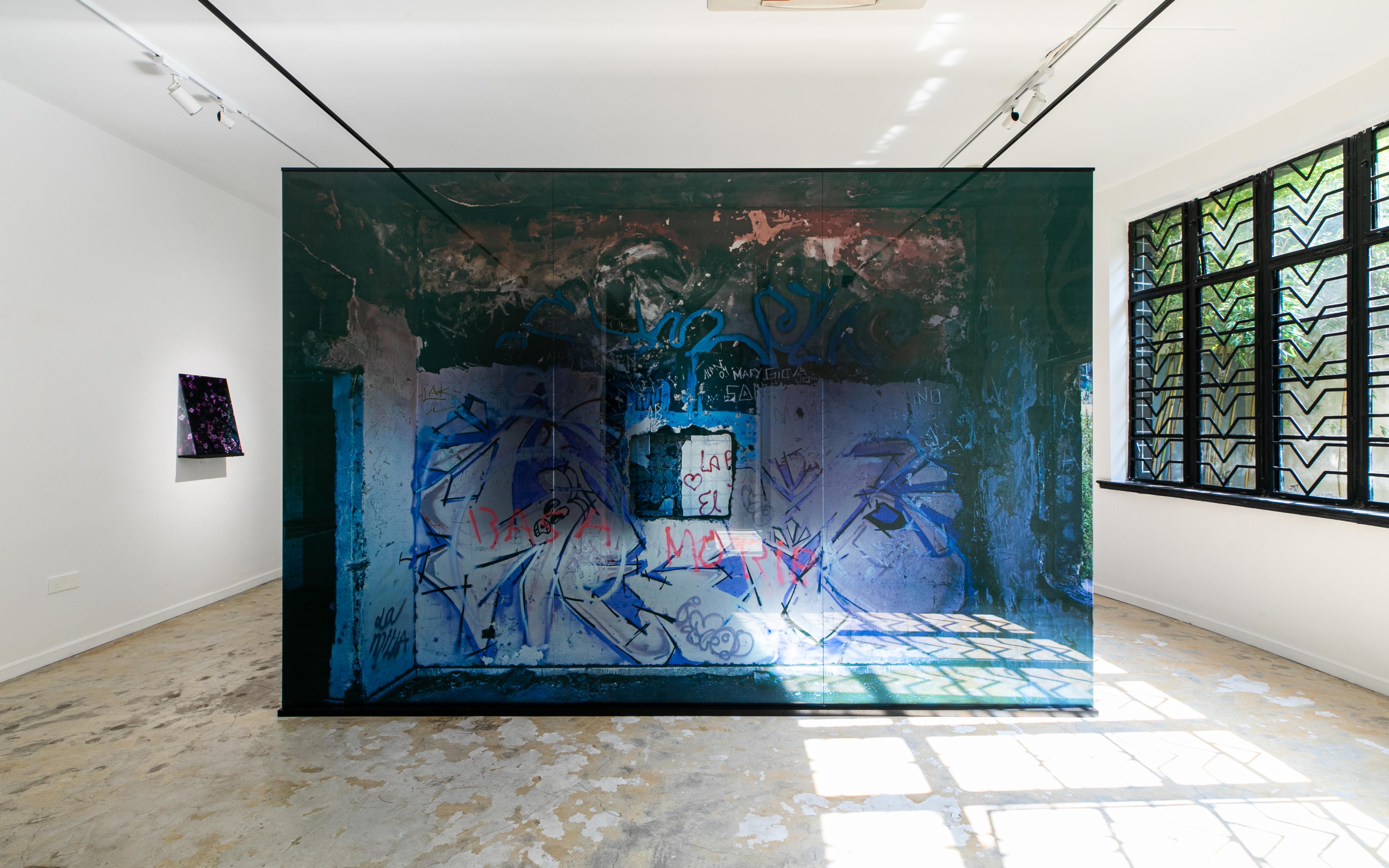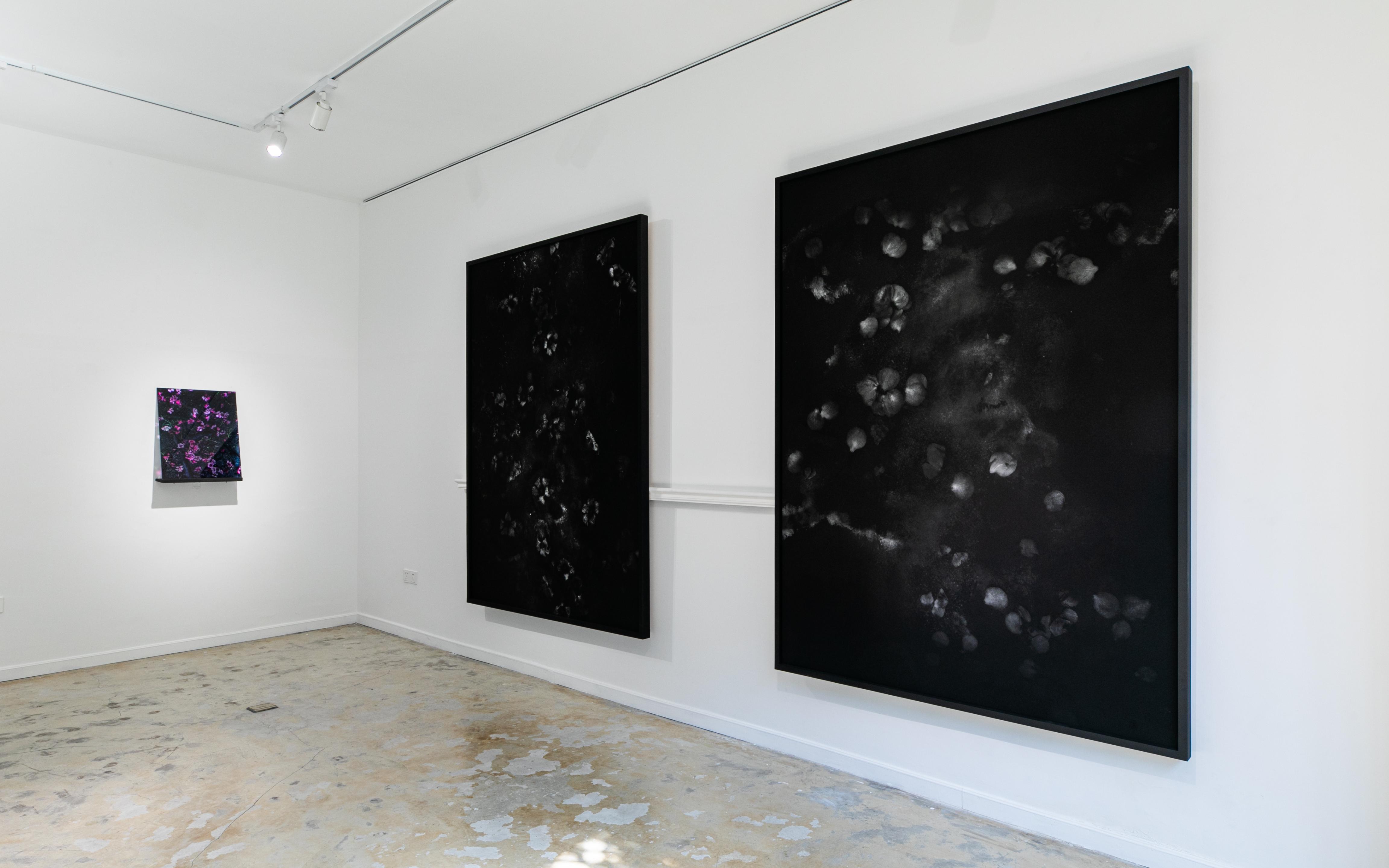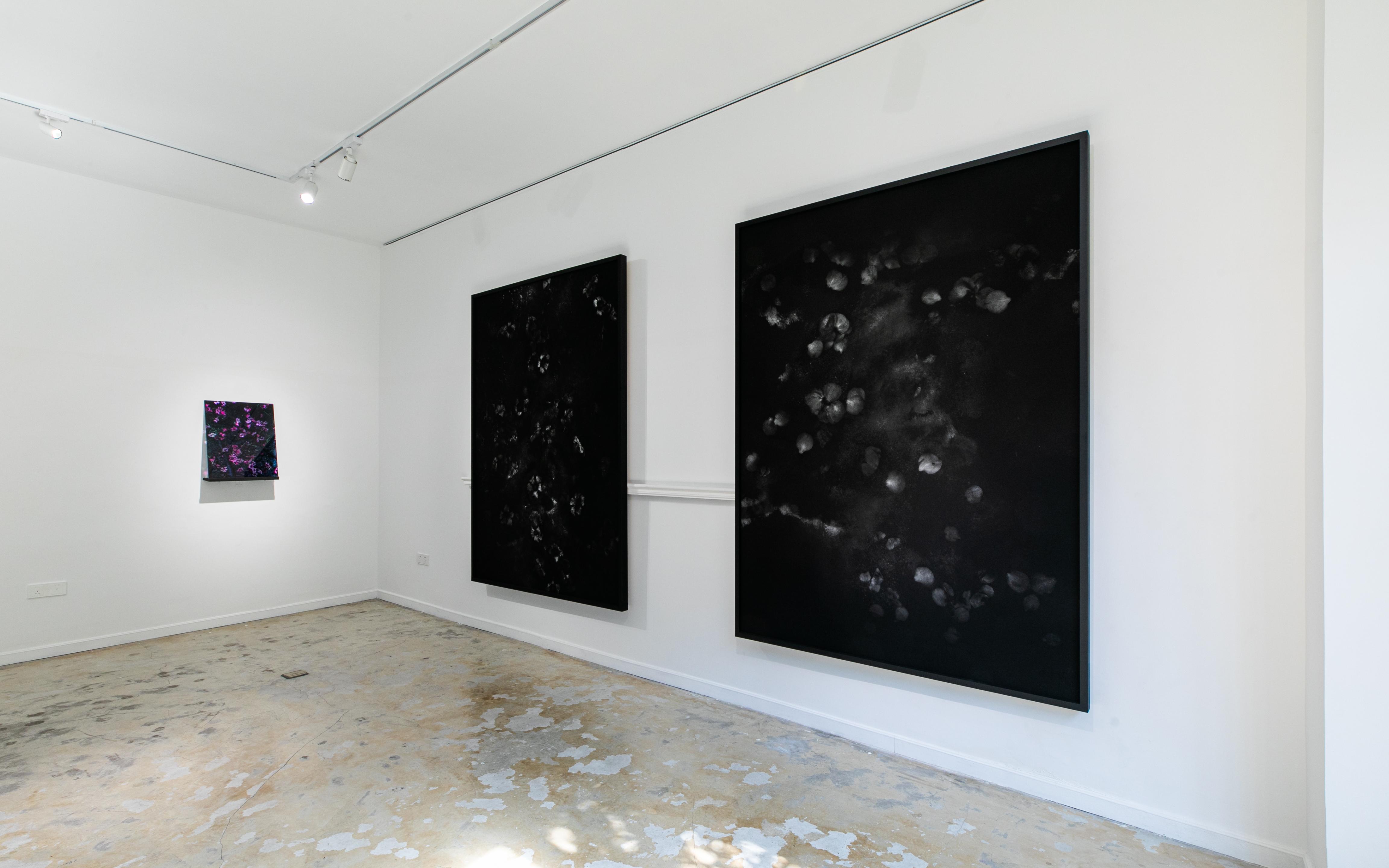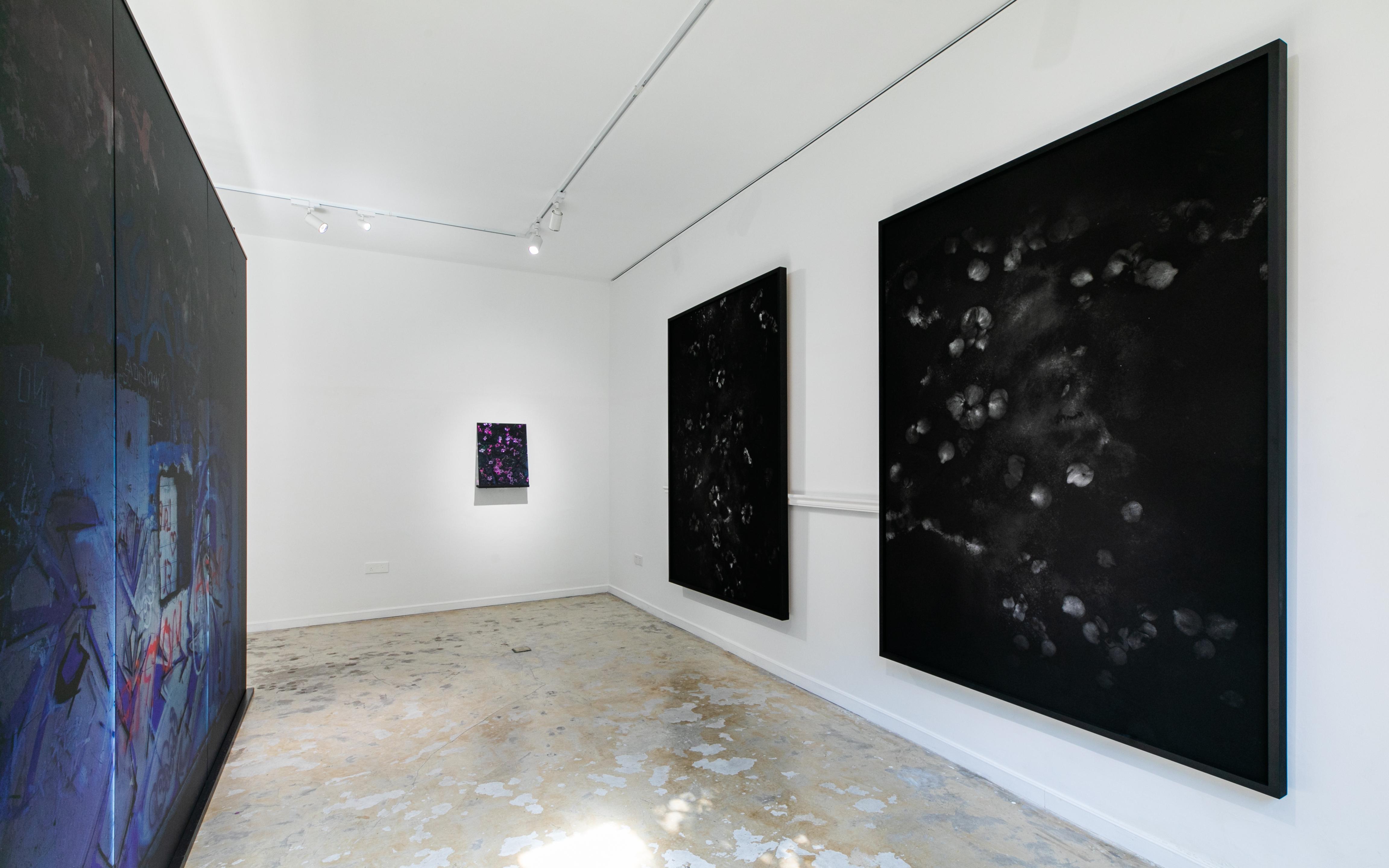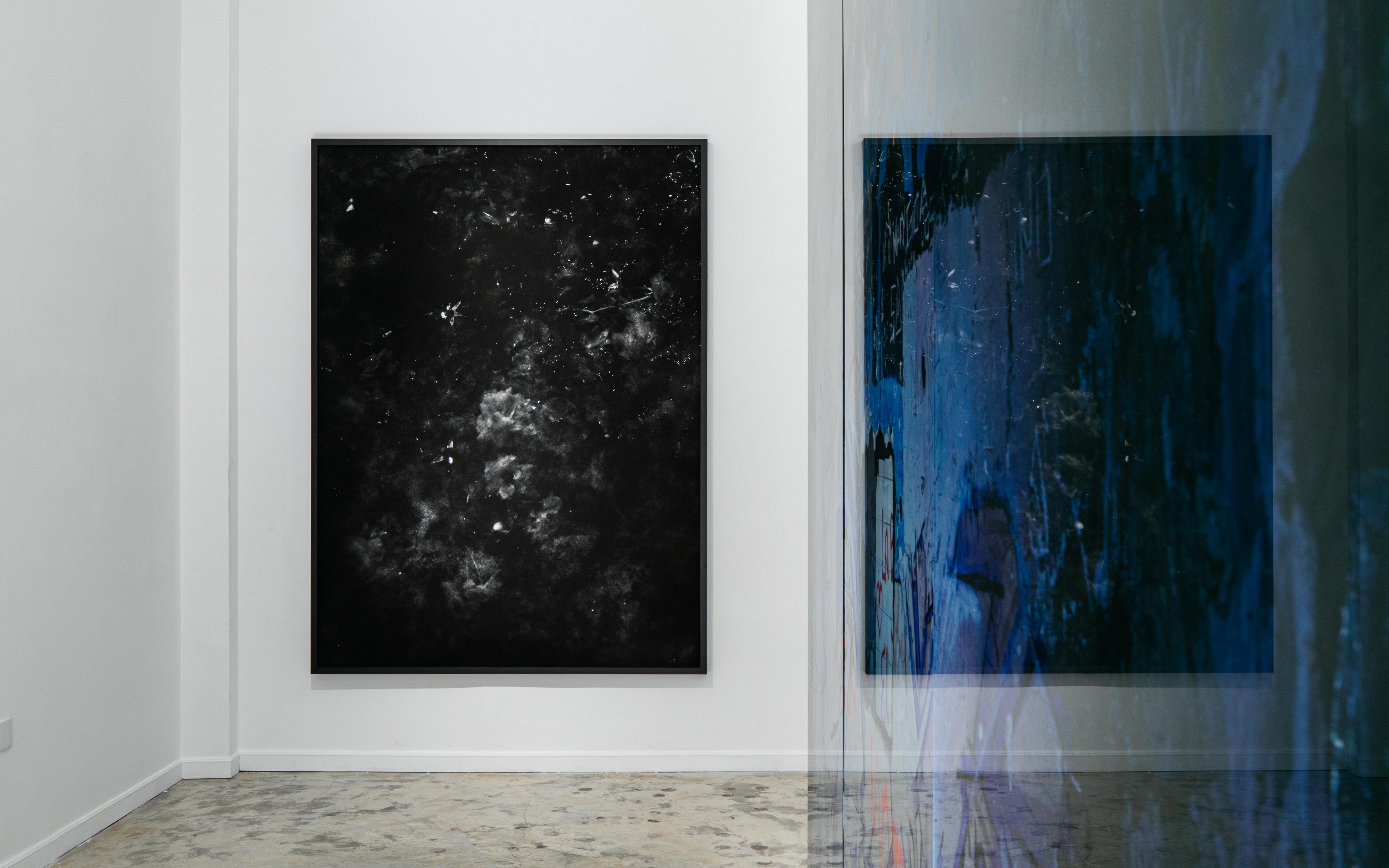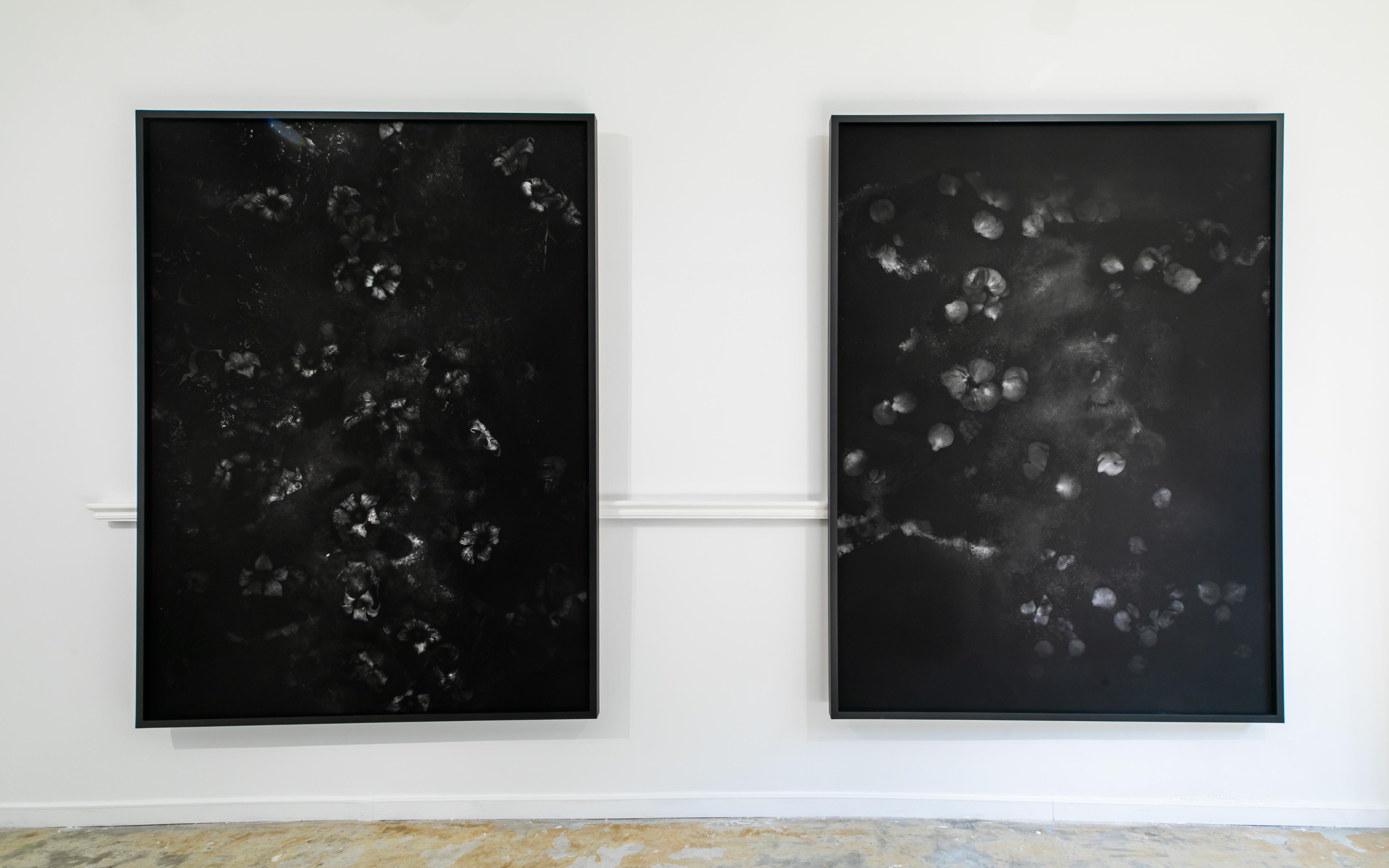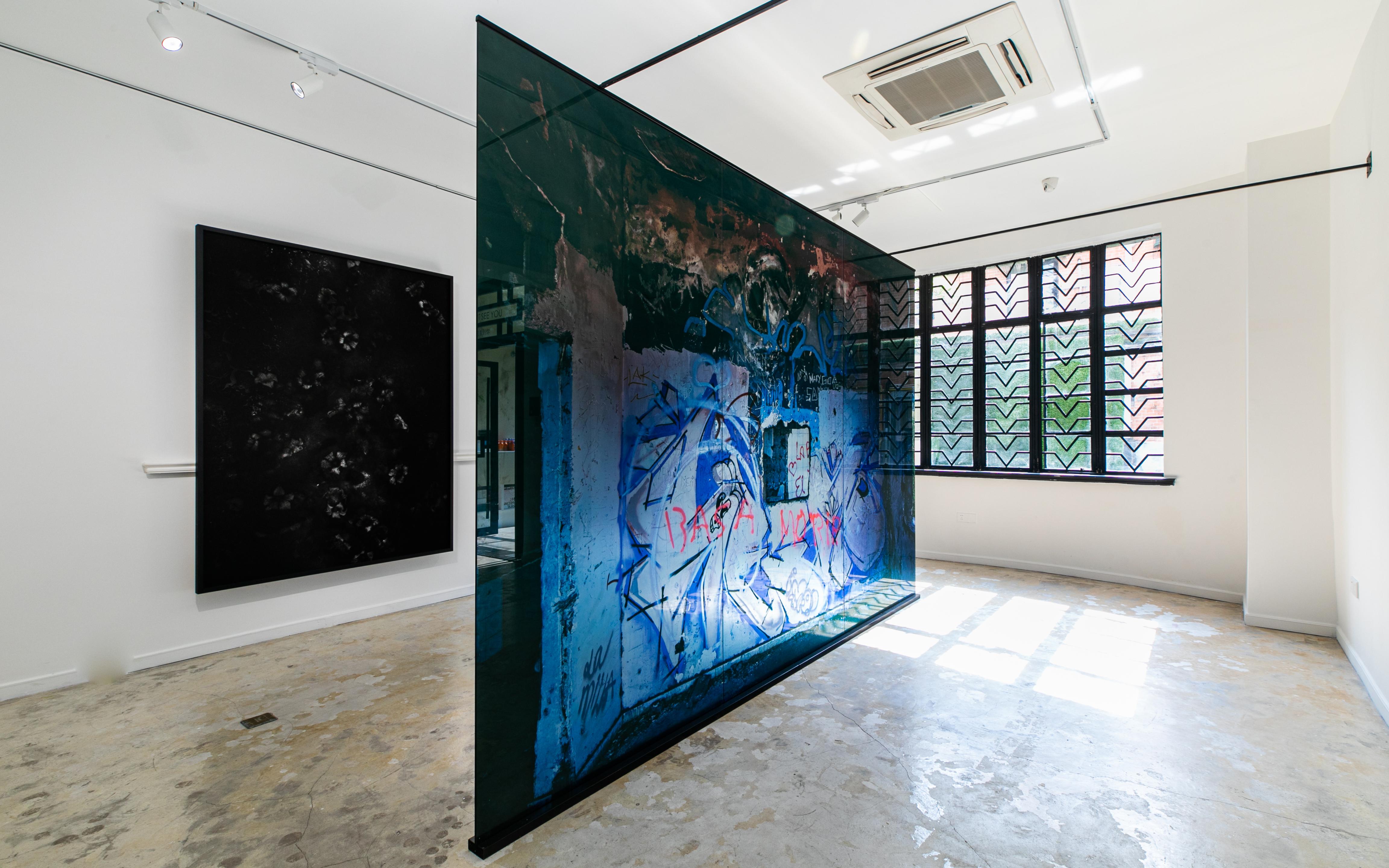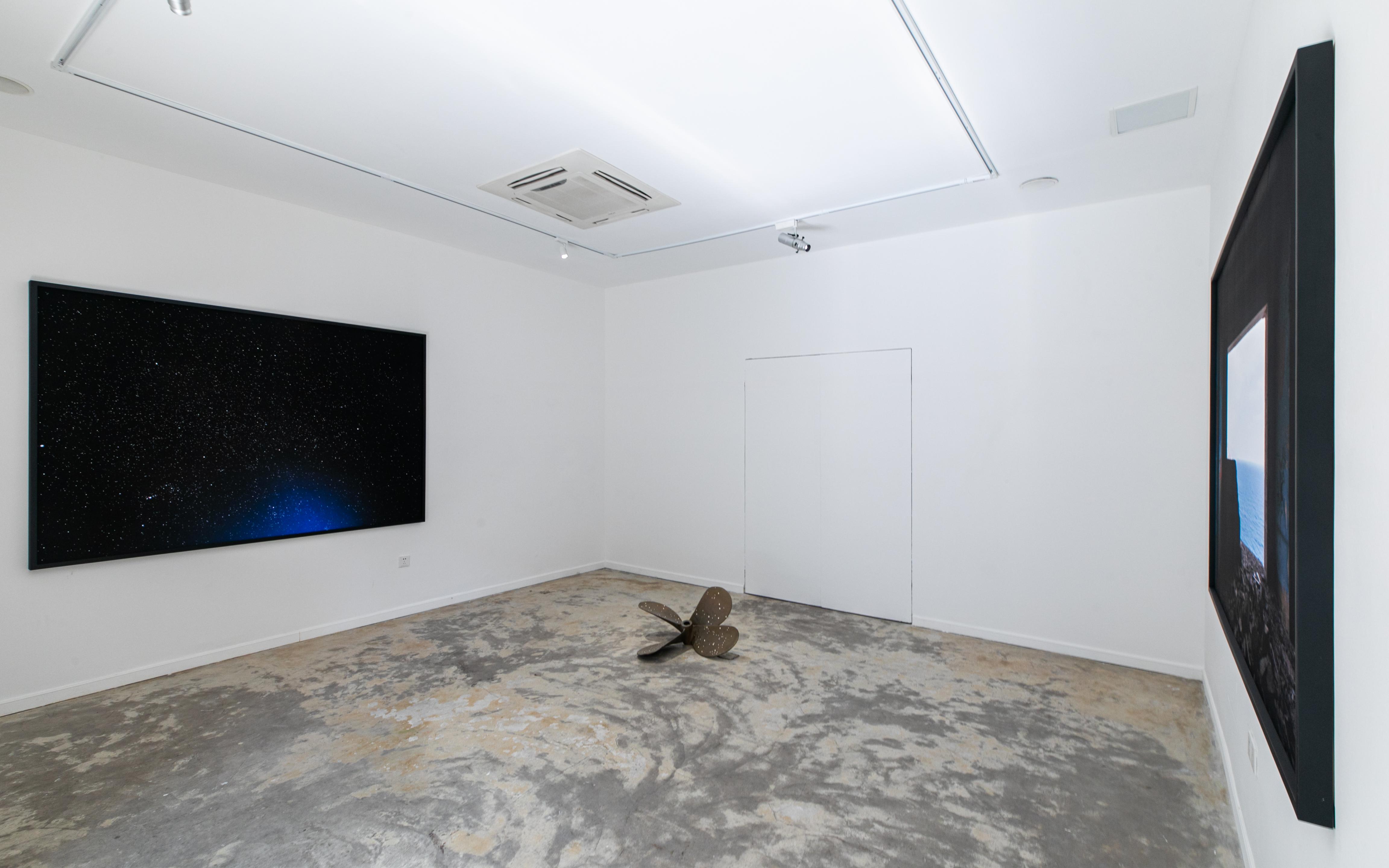The dichotomies in Giovanni Ozzola’s art are deceptively simple - light and darkness, nature and man, the temporal and the infinite. It is the tension between these dichotomies and the fact that his work’s structure and scale deny the viewer a neutral perspective that generate a feeling of dizzying awe. Giovanni seeks to transform his audience from observers to participants. In his breakthrough video “Garage” we move from darkness to light as a steel garage door opens slowly to reveal a resplendent sea scape. But it soon becomes apparent that there is no defined boundary between the stark interior of the garage and the encroaching ocean leaving the viewer with a strange sense of relief as the door closes and they are returned to their blackened box
In his bunker photographs, several of which are on display in this exhibition, the artist contrasts the magnificent mountain top vistas from his chosen home on the Canary Islands with the decaying concrete shells through which they are viewed. These shells often stained with the detritus of intervening human visitation seem to be conceding to their inevitable evisceration by the relentless forces of the natural environment in which they are perched. Our own collection includes a photograph of Giovanni’s in which majestic sand dunes tumble through an abandoned warehouse beautifully illuminated by beams of light seeping through the rafters. It is at once a soothing work resting above our dining room table and consumed daily with joy and a persistent reminder that as the sands encroach the remaining human space will fill and darkness will descend upon us.
As with the characters in the novels of one of his favorite authors, Murakami, Ozzola casts his audience as lonely protagonists adrift in a sea of surreality. In I Did Not See You the artist posits the gallery floor as an ocean on which rests an engraved propeller from an ancient ship - the last vestige of a vessel that might help us navigate back to shore. On the walls are a series of star scapes, one sparkling blue but the others ominously dark and forebodingly entitled “Fear of You”. From these vertiginous glimpses into the void the artist provides a sole oasis resting near the center of the second room in the exhibition. It is the graffiti scarred wall of one of his island bunkers blown to scale and printed on glass. This work - imposing, colorful, elegant and delicate - is a last reminder of the messy, chaotic and resplendent touch of human kind.
Ozzola’s path to his current home and work place is the product of his search for the Pillars of Hercules - the symbolic markers of the end of the known ancient world on which were rumored to be inscribed the words “Non Plus Ultra” (Nothing Further Beyond). This seems a fitting choice of place from which to launch a body of work in which the artist asks viewers to join him in gazing at the unknown while clinging to the last boarders of civilization.
Andrew Ruff, Oct 25, 2021
乔瓦尼·欧祖拉艺术中的二分法看似简单: 明与暗、自然与人,短暂与永恒。但正是这种二分法的对立,以及他作品的结构和体量,让观者无法保持中立,而是被他作品的壮丽晕眩而打动。乔瓦尼力图将他的观众从观察者转变为参与者,在他的成名影像作品《车库》中,观众随着一扇缓缓打开的钢制车库门,从黑暗进入光明,眼前出现一片波光粼粼的海水。然而观众很快会发现,简陋的车库内部与侵袭而来的海水之间并没有明确的边界。当大门关闭时,观众似乎感到一种奇怪的解脱感,再次回到属于自己的黑盒子里。
本次展览中呈现的部分地堡主题的作品,拍摄于艺术家生活居住的大西洋上的加那利群岛。壮丽的山顶景色,透过观察它们的视角所处的斑斓破落的混凝土外墙,形成强烈对比。这些外墙经常沾染着人类到访后留下的废弃物,似乎是在证明人们赖以生存的环境,终究也会不可避免地被大自然无情的力量吞噬。在我们自己收藏的乔瓦尼的作品中,呈现的是一个被一堆高大的沙丘侵入的废弃仓库,光线优雅地从仓库的椽子中透出,落在沙丘上面。这件作品挂在我们餐桌旁的墙上,每每看着它,都感到它为我们的日常带来安抚和喜悦;但它又不时地提醒我们,随着沙子的侵入,人类仅剩的生存空间将被填满,黑暗终将而至。
村上春树是欧祖拉最喜爱的作家之一,正如他小说中的人物一般,欧祖拉同样将他的观众塑造成在超现实的海洋中漂泊的孤独主人公。在《我没看到你》中,艺术家把展厅的地板想象成一片海洋,在上面放置了一只来自古船的带着雕刻的螺旋桨,古船上最后的遗物或许可以把我们带回岸上。展厅墙上挂的一系列星空作品,除了其中一幅呈现的是蔚蓝天空上的闪耀群星之外,其他作品上的夜空都是阴云密布,黯淡无光,欧祖拉将这些带有不详寓意的作品命名为《恐惧你》。
离开这些令人眩晕的凝视虚空的作品,艺术家在展厅下一个房间正中创造了一个独立的绿洲。一幅呈现岛屿上地堡内一面布满涂鸦的墙壁的作品,在这里被按照墙壁原大的比例放大,打印在玻璃上,单独摆放在展厅。作品色彩丰富,气势宏大,其优雅与精致,同时也是对人类社会混乱无序、灿烂奢靡的最后警示。
欧祖拉现在居住和生活的加纳利群岛,据说他是在寻找希腊神话中的“赫拉克勒斯石柱“的路途中发现这里的。传说这位最后一个古代文明的创立者的石柱上刻有这样的铭文:“Non Plus Ultra”(此处之外,再无天地)。对于创作如此作品的艺术家,这个居所的选择实在是太适宜了。在这里,守卫着人类文明的最后一道边界,艺术家邀请我们一同凝视未知。
Andrew Ruff,2021 年 10 月 25 日

